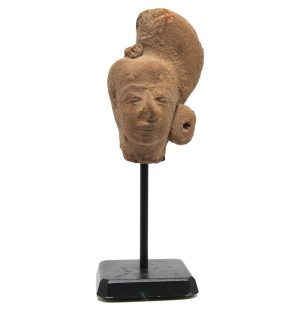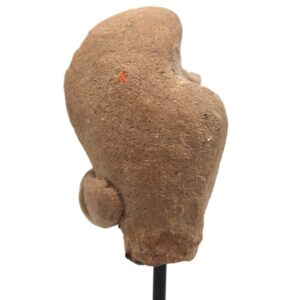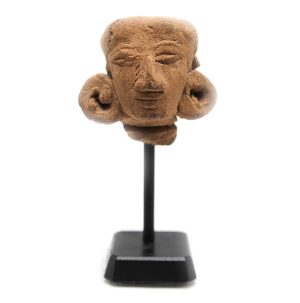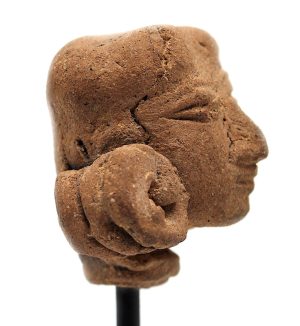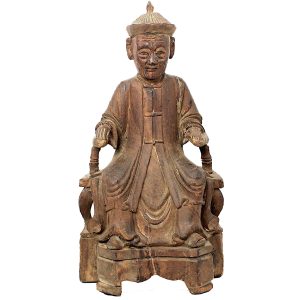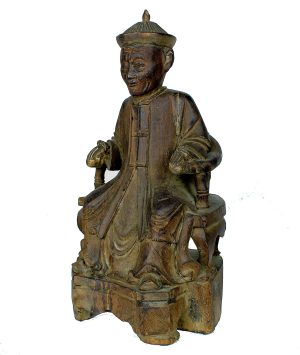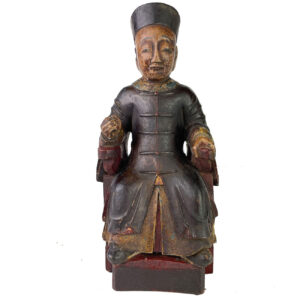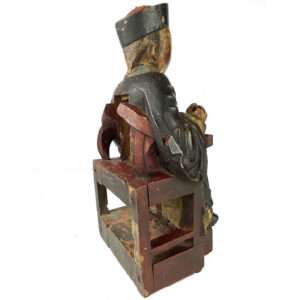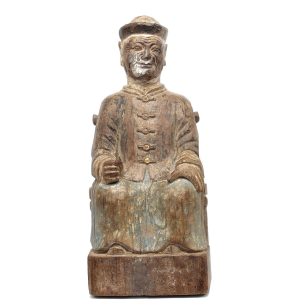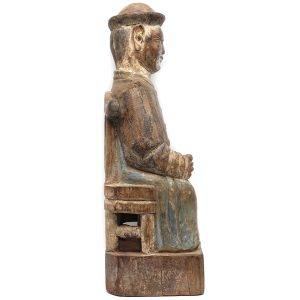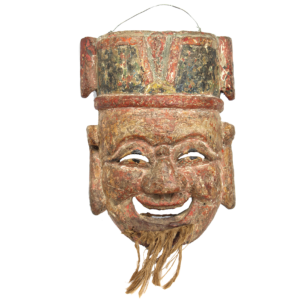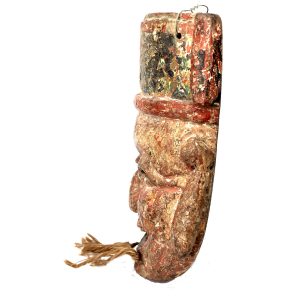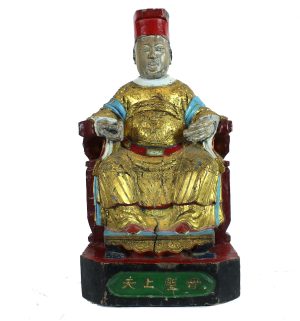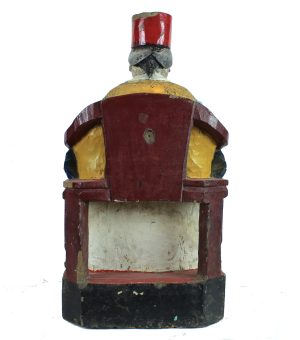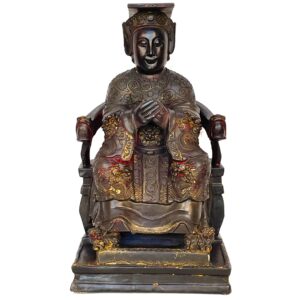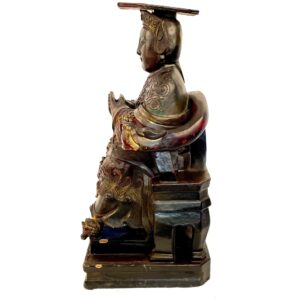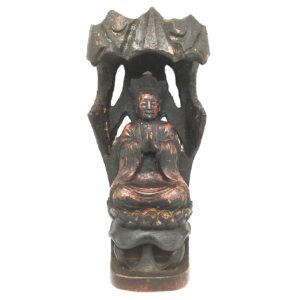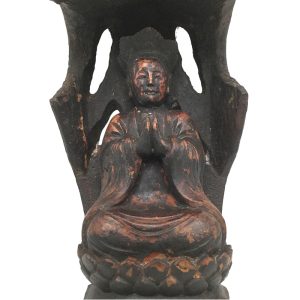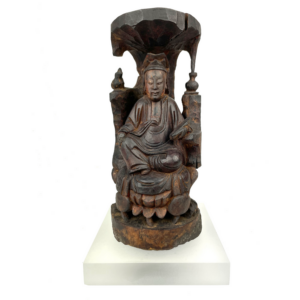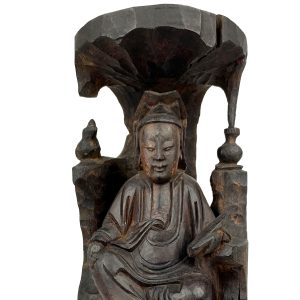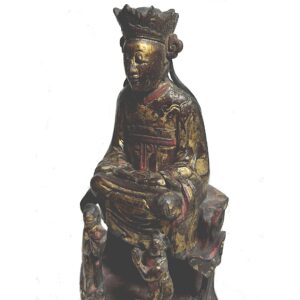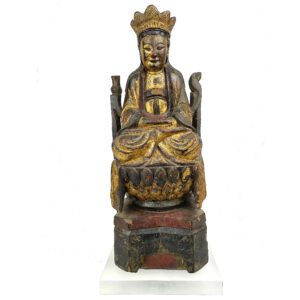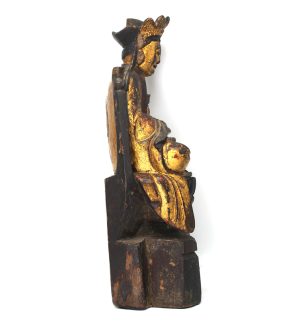Showing 61–72 of 204 results
-
Sale!


$195.00 Original price was: $195.00.$135.00Current price is: $135.00.
Ht: 4” W: 1.5” D: 1.75”|FREE SHIPPING WITHIN CONTINENTAL U.S.
Javanese terracotta head part of bas-relief frieze from Majapahit Empire. Most unearthed figures were small decapitated heads with Javanese facial features, hairstyles, large ear ornamentations of upper classes. A great small piece of history.
-
Sale!


$195.00 Original price was: $195.00.$135.00Current price is: $135.00.
H: 2.75″ W:1.375 ” D:1.25″ | FREE SHIPPING WITHIN CONTINENTAL U.S.
Crafted during the Majapahit Empire in Java this rare head was part of a bas-relief frieze decapitated as part of religious offerings.
-
Sale!


$850.00 Original price was: $850.00.$695.00Current price is: $695.00.
H: 12.75” W: 6.625” D: 5.75” | FREE SHIPPING within Continental u.s.
Masterfully carved ancestor mandarin official on horseshoe chair in the round with cabriole legs, considered a “marker of high status, finely dressed in long Mandarin coat and pointed rattan hat. Benevolent face was homage to a revered family member. It is one of our favorite ancestor figures.
-
Sale!


$455.00 Original price was: $455.00.$295.00Current price is: $295.00.
H:8.5 ” W: 4 ” D: 3.3 ” | FREE SHIPPING WITHIN CONTINENTAL U.S.
This ancestor figure official sits on a horseshoe chair showing his status wearing official’s attire: 5-button Mandarin long coat with a round collar and woven hat. Has a personalized tranquil face with a hint of a smile.
-
Sale!


$595.00 Original price was: $595.00.$485.00Current price is: $485.00.
H: 11.5″ W: 5″ D: 4″ | FREE SHIPPING WITHIN CONTINENTAL U.S.
The finely carved ancestor figure in traditional Qing dynasty high neck Mandarin official’s long jacket with front buttons and official rattan woven headwear. The chair’s back slat was omitted as back carved cavity for consecration in an eye-opening ceremony
-
Sale!


$595.00 Original price was: $595.00.$475.00Current price is: $475.00.
H: 10.5” W:7.75” D: 3” | FREE SHIPPING WITHIN CONTINENTAL US
This antique Nuo Opera mask is Tudi Gong, benevolent Earth god with smiling animated face, long eyebrows, hemp beard and high decorative hat. With an honest gentle disposition, he symbolizing the power of good to defeat evil. Nuo popular in Ming/ Qing dynasties, there are few remaining troupes.
-
Sale!


$1,150.00 Original price was: $1,150.00.$875.00Current price is: $875.00.
H: 19.25″ W: 10″ D: 8.75″ |CALL 213-568-3030 OR EMAIL [email protected] FOR SHIPPING.
Seated imperiously on a horseshoe chair with carved title “Holy Mother in Heaven,” Mazu is depicted in the imperial style, with a regal flat topped headdress, elaborate robes with dragons, official’s girdle in red and gilt.
-
Sale!


$1,050.00 Original price was: $1,050.00.$650.00Current price is: $650.00.
H: 15.375” W: 8.625” D: 7.5” | CONTACT US AT 213-568-3030 or email [email protected] for SHIPPING.
Mazu, protector of sea, is portrayed as the imperially sanctioned “Empress of Heaven” on an elaborate, horseshoe shaped dragon throne, holding a hu tablet, with elegant dragon robes, official’s girdle, Empress headdress and small feet on gilt fu lion foot rest.
-
Sale!


$450.00 Original price was: $450.00.$325.00Current price is: $325.00.
H: 11.75″ W: 5.25″ D: 4.75 ” | Free shipping within continental us
Provincial Nanhai Guanyin palms at heart in anjali mudra, a mudra of offering rarely used for Nanhai Guanyin. On lotus throne at Tidal Cave on Putuo under a craggy rock outcrop with pierced openwork.
-
Sale!


$750.00 Original price was: $750.00.$500.00Current price is: $500.00.
H: 9.5 ” D: 4.5″ | FREE SHIPPING WITHIN CONTINENTAL U.S.
Rare provincial white hooded Nanhai Guanyin in Cave below openwork draped moss and barbed rocks holding precious scrolls, with vial and parrot. Open lotuses symbolize her purity and enlightenment, closed lotuses potential for enlightenment of others.
-
Sale!


$1,350.00 Original price was: $1,350.00.$1,200.00Current price is: $1,200.00.
H: 11.5″ W: 6″ D: 4.5″ | FREE SHIPPING IN CONTINENTAL U.S.
Nanhai Guanyin on Mount Putuo sits as a triad with acolytes Shan Tsai hands in prayer and the Dragon Princess offering the “illuminating pearl.” Very rare Ming sculpture on an Acrylic base is one of our favorites VA collection carvings.
-
Sale!


$1,450.00 Original price was: $1,450.00.$1,150.00Current price is: $1,150.00.
H: 15.5″ W: 6″ D: 5.25″ | CALL 213-568-3030 OR EMAIL VANISHINGARTS213@GMAIL/COM for shipping information
Elegant Guanyin in meditation, gilt covered with five-lobed crown. Sacred vial on her right and parrot on left. Guanyins statues with symbols in this condition are rare and impart a feeling of serenity to the environment around them.
End of content
End of content

